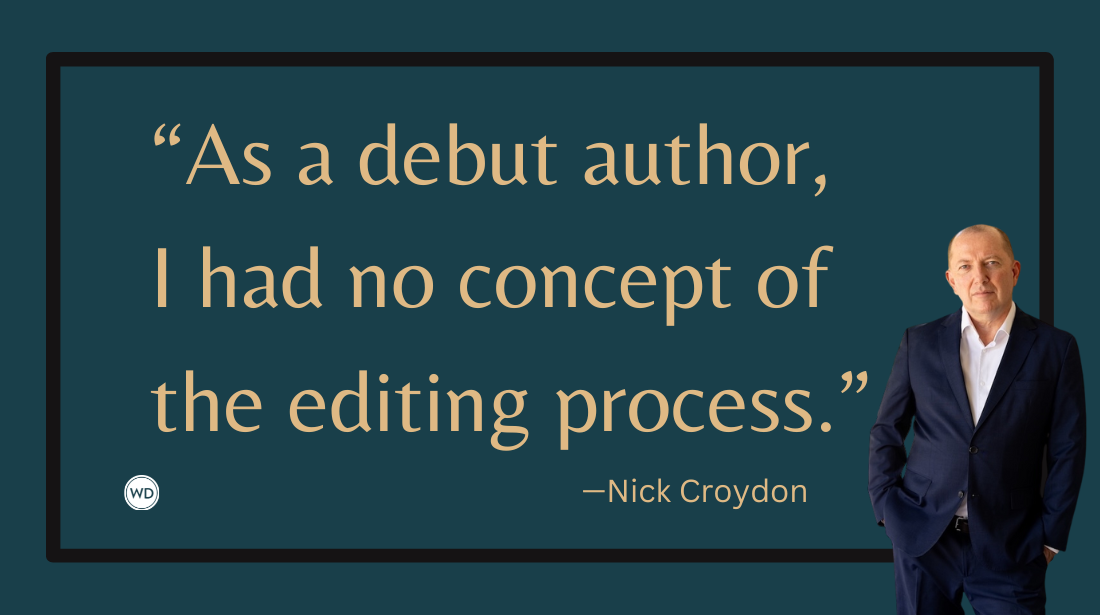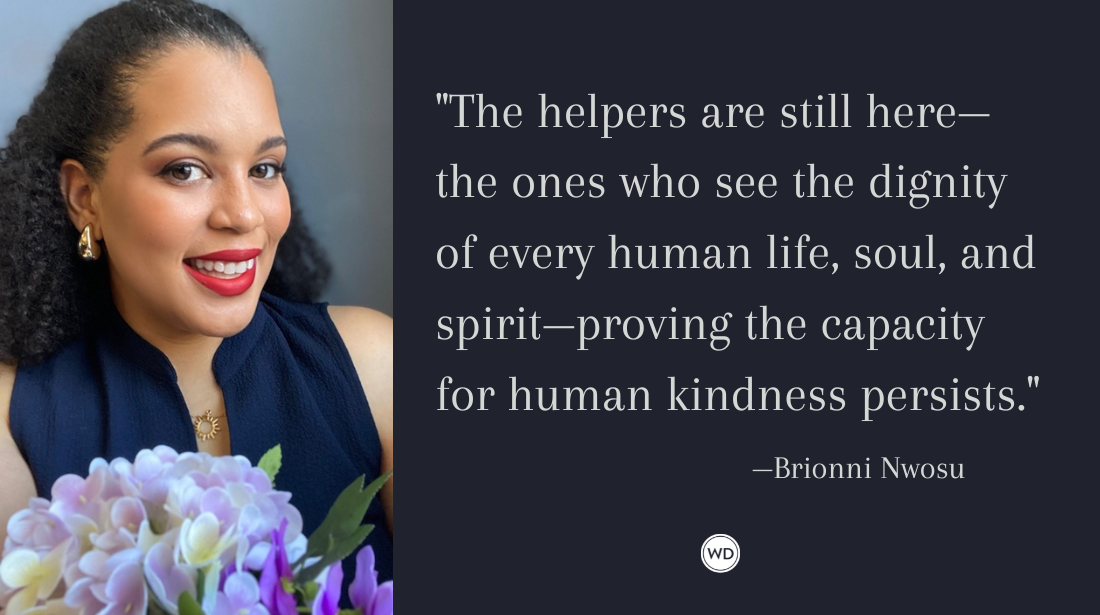Writing Spicy Scenes That Are Integral to the Story
Author Abigail Owen explains why writing spicy romance scenes are similar to writing fight scenes and how to make them integral to the story.
Spicy scenes. Sex scenes. Love scenes. Whatever we call them, these scenes are some of the most fun—but also some of the most complex and nuanced—to create. Why?
Because of the nature of the spice itself. Sex is the most personal and intimate way one human being can connect with another. But it can also be messy, complicated, and easy to misconstrue. That’s real life. So, as a writer, the question then becomes, how do we capture all of that and make it integral to character and story?
My approach? Don’t laugh, but I write spicy scenes in the same manner that I approach battle scenes.
I’m serious! To me, these two types of scenes are similarly layered with elements of the physical action, but also with emotional impacts, internal thoughts, specific uses of language, points of connection, and longer lasting impacts leading, ultimately to an HEA (happy ever after) for characters who are the pivotal element in all of it.
With that in mind, here are my top 4 tips for writing spicy scenes that are integral to your story.
TIP #1: START WITH THE BASICS
A spicy scene can and will vary widely in terms of language use, actions being shared, the level of heat described on page, and impact to the story. Think about it…a love scene in a coming-of-age, first-time-for-both-parties upper YA with romantic elements is going to be quite different from a monster-fantasy erotica with consensual BDSM involving multiple partners.
So start by asking yourself, when it comes to spicy scenes, what are the reader expectations for these basics:
Genre/Subgenre
Genre and subgenre will make possibly the biggest difference to a writer’s approach to spicy scenes. Are you writing a romance, or is this a different fictional genre that will include romantic elements? If you’re writing a romance, what subgenre? There are vast differences in the approach to spice across the romantic subgenres. Author Michelle M. Pillow has a great list of romantic subgenres.
Audience
When thinking about audience, consider reader expectations and demographics: age, gender, sexual orientation, and reading habits. Are you writing for readers who typically read romance, or those who don’t? Do they prefer explicit detail, euphemism, or closed-door scenes? Are you aiming at an upper YA audience, which is more about first experiences, or mid-life which comes with different expectations?
Heat-Level
Heat level ranges from “sweet” with no spice to dark romance and erotica.
It’s shaped first by genre and audience, then by your characters’ journeys and what’s right for them. The heat-level, more than anything else, will also determine your choice language, from the euphemistic to the explicit.
For a good starting place for heat-levels, check out this post by author Maddie James.
TIP #2: KNOW YOUR CHARACTERS
Spicy scenes are deeply personal. No two people want or need sex for the same reasons, enjoy the same intimacies, or react in the same way. Know your characters so each scene fits who they are, where they are in the story, and where they’re headed.
Because you know your characters best, there is no way to list ALL the questions you might ask yourself here, but I have a few to get you started.
Note: Assumes all characters are consenting adults (18+).
- What is the character’s age group? Upper YA vs. new adult vs. adult vs. midlife vs. late in life are different phases in life with different approaches to and expectations of sex. (*This is different, BTW, from your reader’s age group.)
- What is the character’s mental age? Are they naïve or world weary?
- What is the character’s previous sexual experience? Positive, negative, or observed?
- What is the character’s personality? Personality will make a huge difference to actions and reactions within any given scene.
- What is the character’s backstory? What about their past, including their emotional wounds, might inform their needs and reactions?
- What does the character want/need from the spice? What do they want/need in this particular moment in the story and with this partner(s)?
- What is the character’s understanding and consideration of their partner(s) needs? There is nothing more intimate or connection-building than being thoughtful of and providing for someone else’s needs.
PRO TIP: Apply this knowledge to both the POV character and their partner(s), showing it through visible actions and reactions.
TIP #3: KNOW WHERE THE CHARACTERS ARE IN THE STORY
A romantic ARC progresses through stages of intimacy and relationship, culminating in the HEA. The spicy scene will differ depending on where the characters are in that progression.
I have created my own approach that I call the 4 Elements of the Romantic ARC. Ask where the characters are in each element when the spicy scene occurs.
Attraction
Both physical and mental attraction moving from the early stage of awareness (oh he’s so hot; oh she’s so funny; I like how they treat kids), through stages of increasing trust and intimacy, all the way to the end stage of deep desire that is intensified by aspects like trust, connection, and partnership.
Conflict
Romantic conflict and/or overcoming that conflict is the beating heart of a romance. It moves from the awkwardness of just meeting and realizing there is a conflict, to learning to trust and connect despite the conflict, to resolving that conflict allowing the HEA to happen.
Connection
Connection is how we relate to other people. From the first introduction when we are awkwardly feeling each other out to a deep relationship built on trust and an intimate knowledge and acceptance of each other. For me, the stages of this romantic ARC element are:
Building an “Us”
In a romance, the “Us” is the end goal, the HEA. But to get there, characters must work through the stages of building that “us,” starting from there is no “us,” through spending time together and noticing each other, through sharing deeper and deeper parts of themselves building trust and partnership, all the way to a wholehearted relationship at the HEA.
TIP #4: BUILD THE SCENE IN LAYERS
Finally, take everything we’ve been considering in the tips above and weave it into your scene in layers.
The mistake I see many new writers make is focusing solely on the physical element. And, while that is very important in spicy scenes, don’t neglect the other layers. By adding the emotional and connection elements, you can create a scene that really grabs your reader at a deeper emotional level but also moves the characters forward both romantically and individually.
Layer #1: Physical
The logistics of the scene. The physical actions being taken and built to a climax. I like to get the physical on the page first because it informs all the other layers which I then paint on over it.
One of my favorite tools for the physical layer is the 12 Stages of Intimacy listed below. (Check out this article on Storytelling DB for more details.) Build through these stages for a natural progression of intimacy. The speed that you jump from stage to stage may differ based on the heat-level and purpose of the spicy scene itself.
1. Eye to body
2. Eye to eye
3. Voice to voice
4. Hand to hand (or arm)
5. Arm to shoulder
6. Arm to waist, or back
7. Mouth to mouth
8. Hand to head
9. Hand to body
10. Mouth to breast
11. Hand to genitals
12. Genitals to genitals
PRO TIP: Author Denise Williams shares in this Writer’s Digest article several tips, one of which is “don’t detail every movement. It can disrupt the reader’s connection to the character and the scene.”
Layer #2: Emotional
As the characters are moving through the physical, how are they reacting to or feeling about what’s happening between them? Think through what this means to them, what their goals were going into it, how their partner’s actions/reactions are impacting them, how this act might be impacting their romance, them as characters, or the story moving forward?
Layer #3: Sensory
Spicy scenes rely heavily on sensory experience—sight, touch, taste, sound, and smell—so use them to amplify emotion. Even better, tie it to the character’s emotions.
Layer #4: Internal Thoughts
For me, the internal thoughts might be the most fun part of the spicy scenes. This is a great way to capture how the spice itself is changing or growing their romance or the characters themselves. Tie internal thoughts to both physical and emotion reactions.
Layer #5: Dialogue
What they say (or don’t say) can shift the entire dynamic. Are they joking through the awkwardness? Sharing tenderness? Silence itself can be powerful. How do any spoken words fit or impact their romance, them as characters, or where the story goes next?
Layer #6: Connection
Because sex is intimate, it inevitably changes something—trust, emotion, or direction. Ask what this scene alters between the characters afterward: trust gained or lost, deeper understanding, solidified love, or new uncertainty.
BONUS TIP: AVOID THE CLICHE
Never as easy as it sounds, but always the goal.
I hope these tips help you refine your approach to writing spicy scenes. Now go create the moments that move your characters—and readers—toward that satisfying HEA.
Check out Abigail Owen's The Things Gods Break here:
(WD uses affiliate links)









